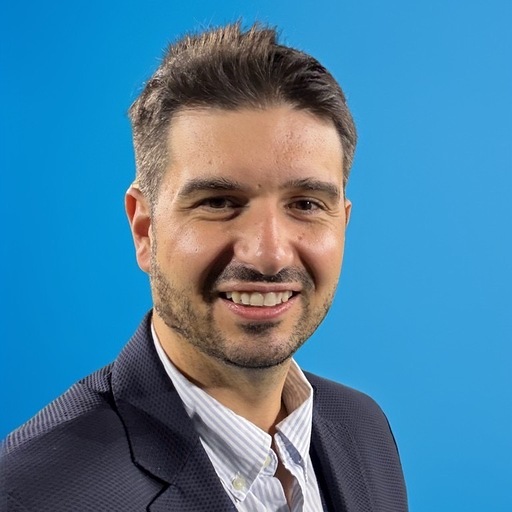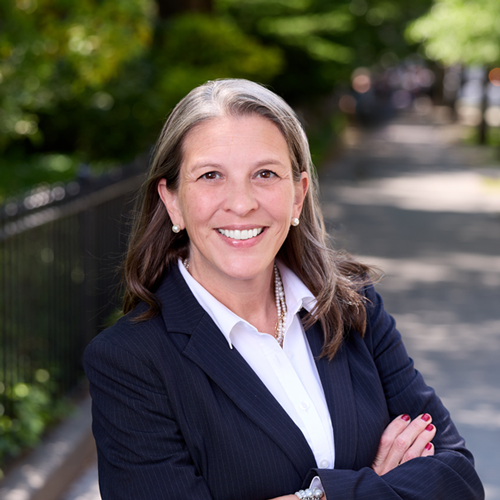Estimated reading time: 5 minutes
Dive into this post to:
- Understand the AI divide plaguing college campuses
- Hear how Internet2 NET+ and Google are combating this disparity through NET+ Google AI Education Leadership
Program (ELP)
- Discover components of NET+ Google AI ELP and its shared community strategy
- Learn ways to join the AI innovation
Campuses across the nation grapple with the adoption of artificial intelligence (AI). They have aggressive promotion from major AI companies in one ear, and universities readily adopting chatbots in the other, both inciting a sense of urgency and a feeling that they’d soon be left behind.
Realistically speaking, the implementation of AI tools on campus is slower than we’d like. Decision makers have to reel back their expectations of virtual studybots, digital teaching assistants, and grandiose AI usage due to technology limitations, user inexperience, and other challenges that prevent these tools from reaching the transformative impact touted by AI sales leads.
However fast or slow, progress is progress. And this shift in educational infrastructure is creating a disparity, threatening to widen the gap between institutions. While some campuses can afford to spend millions to stitch AI into every thread of campus life, others are left to unravel due to vendor-selection processes and prohibitive costs. Not to mention, the uncertainty and concerns of AI tools in data, security, and access management.
A Collaborative Path for AI in R&E
To combat this, Internet2 NET+ and Google have launched the Internet2 NET+ Google AI Education Leadership Program (ELP), a structured, community-driven approach that aids in the responsible adoption and implementation of AI across various institutions, with a primary emphasis on Google Gemini and NotebookLM. It’s a program unlike any other. Instead of campuses operating in their siloes to learn and chart a successful course for AI adoption, Internet2 and Google are leveraging the collective strength of the entire research and higher education (R&E) community. This approach ensures a wide reach of learning and innovation, helping many campuses grow together.
 Sean O’Brien
Sean O’Brien
“AI is reshaping research and education, and our goal is to help our member institutions lead the way. Through the NET+ Google AI ELP, we’re working together as a community to solve the challenges and maximize the opportunities presented by AI,” said Sean O’Brien, Associate Vice President for NET+ Cloud Services.
Of the many benefits anticipated from the Internet2 NET+ Google AI ELP, we can summarize its purpose in three main objectives:
- To help R&E make sense of AI, while aiding in the understanding of AI implementation, adoption, and impactful uses across campuses
- To provide training and support for cohort institutions, addressing concerns and challenges to refine and improve the tools and the program
- To foster a community of practice around AI adoption and implementation so that the R&E community can progress together
Drew Sidel, Head of North America, Google Workspace and AI for Education, sheds insight into the collaboration and its intent for R&E to harness the power of AI collectively.
 Drew Sidel
Drew Sidel
“Our collaboration with Internet2 through the Internet2 NET+ AI ELP program is a testament to our commitment to the higher education community, providing a framework that ensures our most advanced AI tools are accessible, secure, and used responsibly to further academic missions.”
Fostering Innovation through a Shared Strategy
The initial cohort consists of 10 institutions — both private and public — varying in size and location and adding up to over 325,000 students. The cohort includes universities such as Lehigh University, New York University, the University of California, Berkeley, the University of Hawaii, the University of Maryland, Baltimore County, the University of Washington, and the University of Wisconsin-Madison.
A significant part of this initiative is the NET+ program’s work with various campuses to track AI usage, efficiency, challenges, and growth opportunities. Case studies containing these findings will be accessible to institutions within R&E.They will not only present campus success stories but also highlight educational challenges, inspiring all of R&E to learn and grow from collective wins and pitfalls.
The Internet2 NET+ Google AI ELP also includes open dialogue and forums that would be useful to the community.
 Jennifer Sparrow
Jennifer Sparrow
“The future of AI in higher education isn’t about a single tool; it’s about creating a shared strategy for how we use these powerful technologies to advance our academic and research missions,” said Jennifer Sparrow, ssociate Vice President for Research and Instructional Technology & Chief Academic Technology Officer at New York University.
The Internet2 NET+ Google AI ELP is a new approach, guided by the principle that innovation happens best when entire communities can participate, learn, and grow together. The program is also an answer to a call.
“Internet2 member institutions have been seeking meaningful ways to engage foundation model providers at community scale,” said O’Brien, “and this collaboration with Google Workspace and Gemini for Education is a clear example of what’s possible.”